Maclaurin series of the exponential function
Categories: maclaurin series

In this section we will use the Maclaurin series to find a polynomial approximation to the exponential function, ex.
The general formula for the Maclaurin series for the function f(x) is:

Where:
- f(0) is the value of the function for x = 0.
- f'(0) is the value of the first derivative function for x = 0.
- f''(0) is the value of the second derivative function for x = 0.
- f'''(0) is the value of the third derivative function for x = 0.
- And so on.
To apply this to the exponential function, we need to calculate those derivatives.
Derivatives the exponential function
The exponential function is unique in that ex is its own derivative, that is:
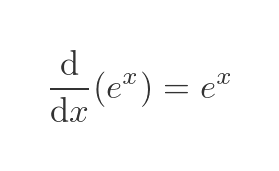
This also applies to the second derivative (and therefore to the third derivative and so on):
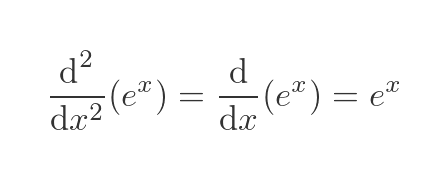
We also know that any positive number raised to the power zero is one, so e0 is one. This means that when x= 0, the value of the exponential function and every nth derivative of the exponential function is equal to one.
This means that:
- f(0) = 1
- f'(0) = 1
- f''(0) = 1
- etc
Maclaurin series of exponential function
Taking the general equation above:

We can replace f(0) and all of its derivatives with 1, giving:

Or using sigma notation (as described here):
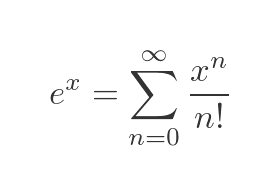
A graphical illustration of the Maclaurin expansion
Here is an animation that shows the first 4 terms of the expansion being added in one by one:
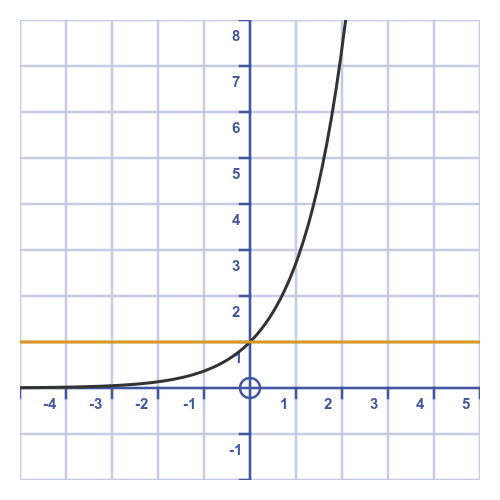
One way to gain an intuitive insight into how the Maclaurin expansion works is to look at graphs of the approximation as we add the terms one by one.
Step 1
Taking just the first term of the expansion gives us:
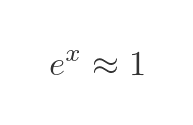
This graph shows the expansion (in yellow) and the exponential function (in black):
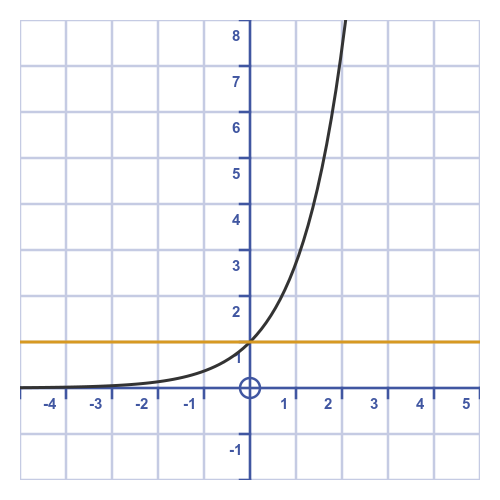
This approximation is not very good, it is just a horizontal straight line which is nothing like the exponential function.
However, if we look at the two functions when x = 0 we see that they both have the same value, 1.
The first term of a Maclaurin series ensures that the value of the series equals the value of the function at x = 0
Step 2
Taking the first two terms of the expansion gives us:
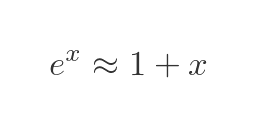
Here is the graph:
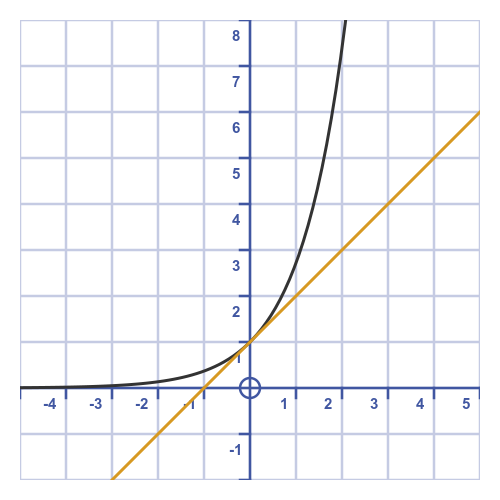
This approximation is still not very good. However, you will notice that the line now forms a tangent to the curve.
This means that when x = 0, the two functions have the same value and the same slope.
The second term of a Maclaurin series ensures that the slope of the series equals the slope of the function at x = 0
Step 3
Taking the first three terms of the expansion gives us:
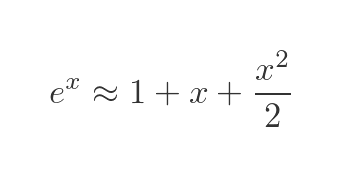
Here is the graph:
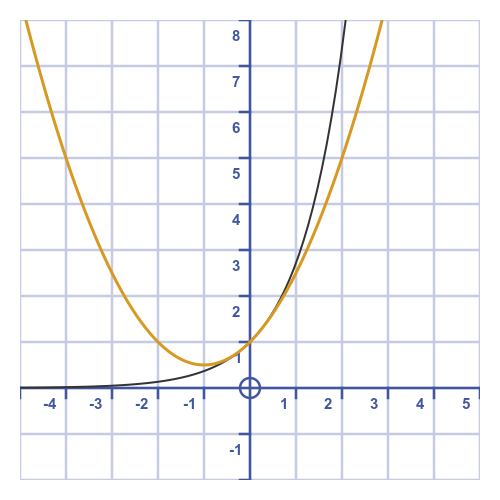
This approximation is now looking a bit better. The curves are roughly similar for values of x between -0.5 and +0.5.
This is because the approximation now matches the value, slope and second derivative of the curve at x = 0.
The third term of a Maclaurin series ensures that the second derivatives of the series and the function are equal at x = 0
Step 4
Taking the first four terms of the expansion gives us:
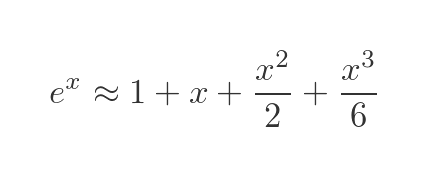
Here is the graph:
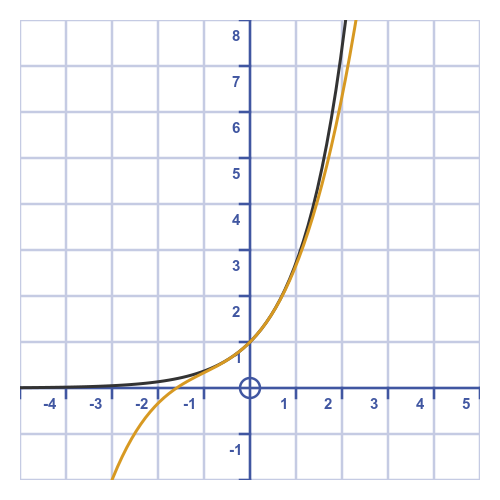
This approximation is now looking quite convincing. The curves are roughly similar for values of x between -1 and +1.
The approximation now matches the value, slope, and the second and third derivatives of the curve at x = 0.
The fourth term of a Maclaurin series ensures that the third derivatives of the series and the function are equal at x = 0
See also

Join the GraphicMaths Newletter
Sign up using this form to receive an email when new content is added:
Popular tags
adder adjacency matrix alu and gate angle answers area argand diagram binary maths cartesian equation chain rule chord circle cofactor combinations complex modulus complex polygon complex power complex root cosh cosine cosine rule cpu cube decagon demorgans law derivative determinant diagonal directrix dodecagon eigenvalue eigenvector ellipse equilateral triangle euler eulers formula exercises exponent exponential exterior angle first principles flip-flop focus gabriels horn gradient graph hendecagon heptagon hexagon horizontal hyperbola hyperbolic function hyperbolic functions infinity integration by parts integration by substitution interior angle inverse hyperbolic function inverse matrix irrational irregular polygon isosceles trapezium isosceles triangle kite koch curve l system line integral locus maclaurin series major axis matrix matrix algebra mean minor axis n choose r nand gate newton raphson method nonagon nor gate normal normal distribution not gate octagon or gate parabola parallelogram parametric equation pentagon perimeter permutations polar coordinates polynomial power probability probability distribution product rule proof pythagoras proof quadrilateral questions radians radius rectangle regular polygon rhombus root sech segment set set-reset flip-flop sine sine rule sinh sloping lines solving equations solving triangles square standard curves standard deviation star polygon statistics straight line graphs surface of revolution symmetry tangent tanh transformation transformations trapezium triangle turtle graphics variance vertical volume volume of revolution xnor gate xor gate